Show and tell: when technology adoption becomes farmer-driven
What does the CASFESA project have to show for two-and-a-half years in Kenya?
Many poor smallholder farmers in Africa bear the brunt of infertile soils. Research offers a partial solution: Conservation Agriculture (CA) helps farmers improve soil productivity through sustainable intensification.
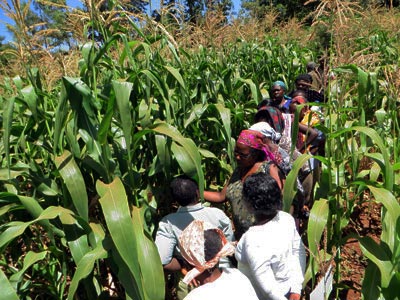
Participants of the project closing workshop held on March 5, 2015.
And some smallholders in Africa are already reaping CA benefits. For example, the Conservation Agriculture and Smallholder Farmers in Eastern and Southern Africa (CASFESA) Project worked with farmers and other partners in Kenya and Ethiopia since 2012. CASFESA’s aim was to buffer small-scale farmers by enhancing farm resilience through better natural resource management in maize based systems.
In Kenya, CASFESA ran for two-and-a-half years in Embu County. At a summative closing workshop held at Embu on 5 March 2015, farmers shared their CASFESA experience. For some of them, the project transformed their farming with remarkable benefits, due to their commitment, as well as the commitment of other key actors in CA dissemination such as the Kenya Agricultural and Livestock Research Organization.
In Kenya, CASFESA promoted three main technologies targeting maize farmers. The technologies are maize and legume intercropping, residue retention and zero tillage with permanent furrows and ridges. Thirty farmers in 15 randomly selected villages volunteered their farms for demonstrations showcasing the three technologies in tandem. Practical demonstrations were done during farmer field days in the selected villages to compare the performance of maize and beans using conservation agriculture and using normal practice. Intercropping is not new and is already very common in the area.
Moti Jaleta, CASFESA Project Coordinator, observed, “From a quick adoption monitoring survey, we noticed about 60 percent of the sample farmers have tried at least some of these techniques with keen interest to continue. The success of the CASFESA Project in Embu has been in getting these technologies to the farmers through practical demonstration, and linking them with farm input suppliers. With this, I believe we have accomplished our task in supporting the smallholders to improve their crop management.”
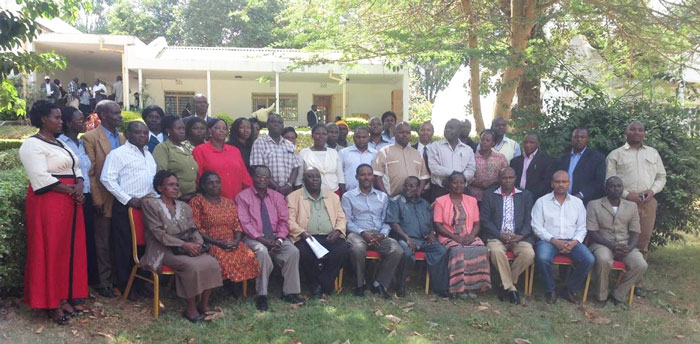
Farmers evaluating maize stand on the conventional versus conservation agriculture plots during field days organized in Embu.
Indeed, a good number of farmers in the villages started using zero tillage with permanent furrows and ridges covered with maize residue. But there was a hitch: initially, adopting the full suite of sustainable-intensification practices appeared unpopular. And why was this? Not because of the practices themselves but because most farmers use maize residue for animal feed. This made residue retention for mulching and enhancing soil fertility a big challenge. So how did the farmers themselves – independent of the researchers – get around these unfavorable trade-offs? Let’s hear it from them.
One farmer, Nancy Mbeere, who adopted CA, harvested an additional eight bags of maize from her small farm. And she did not keep her new know-how to herself: “I have trained my three neighbors on this new technique and they have already started using furrows and ridges and residue retention in their maize shamba [farms].”
Nancy and her neighbors found a solution on animal fodder. “We agreed to have one in every three rows remain in the field as residue and use the other two as feed,” explained Nancy.
For Bethwel Kathiomi, another CA farmer, when his farm had two very good seasons, other farmers approached him for tips on his new-found farming technique. “People kept stopping by my farm to ask questions, and I was happy to share this information with them.”
At the closure workshop, farmers attending committed to continue sharing their experiences and successes, and to support each other through small groups to learn, and access inputs like fertilizers, herbicides and improved seeds. This community commitment should lead to greater CA adoption, given the attention CA benefits are drawing going by the experience of Bethwel and Nancy. It would therefore appear that in this particular case, CA has successfully moved from researchers to farmers, who are now the ones propagating CA practices. Good news indeed for impact, reach and sustainability!
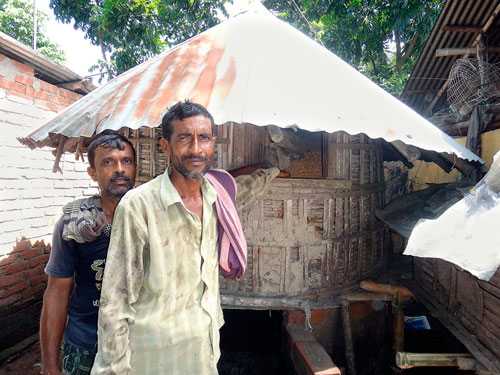
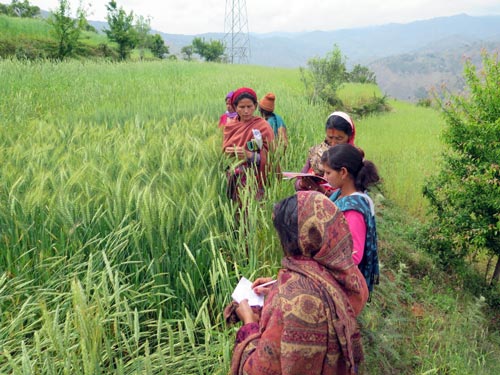 During a farmers’ field day, Ugratara group members expressed that improved varieties like the maize variety Kanchan 101 (hybrid), introduced by CSISA, are more productive than their local maize. Ugratara group member, Naresh Khadka said, “We are producing more than double using the hybrid Kanchan-101 and it’s ready early than the local variety.” For upland rice, trials also showed that the appropriate use of chemical fertilizers nearly doubled yields of local rice varieties and that chemical fertilizer increased yields over those achieved through the application of farmyard manure.
During a farmers’ field day, Ugratara group members expressed that improved varieties like the maize variety Kanchan 101 (hybrid), introduced by CSISA, are more productive than their local maize. Ugratara group member, Naresh Khadka said, “We are producing more than double using the hybrid Kanchan-101 and it’s ready early than the local variety.” For upland rice, trials also showed that the appropriate use of chemical fertilizers nearly doubled yields of local rice varieties and that chemical fertilizer increased yields over those achieved through the application of farmyard manure.
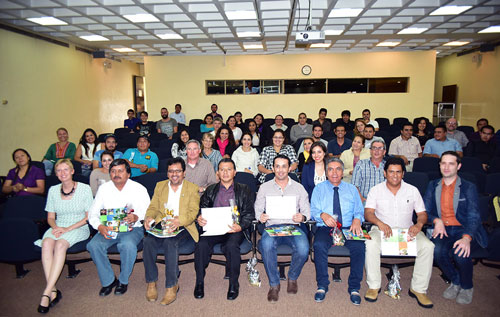
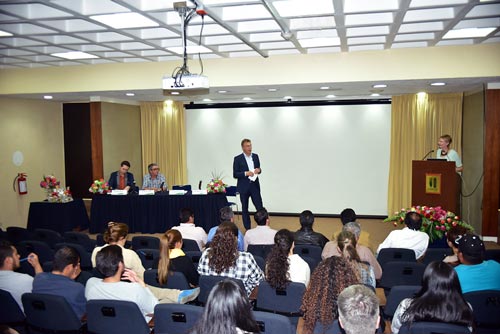

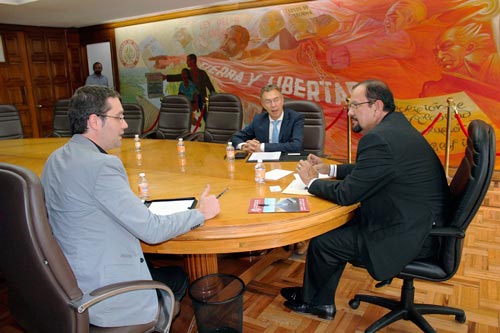


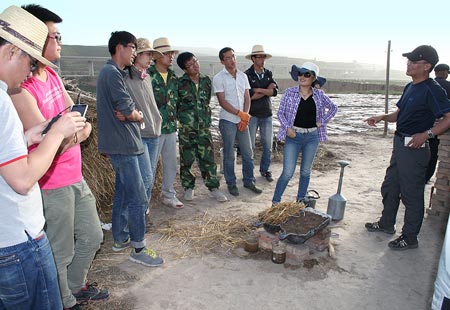
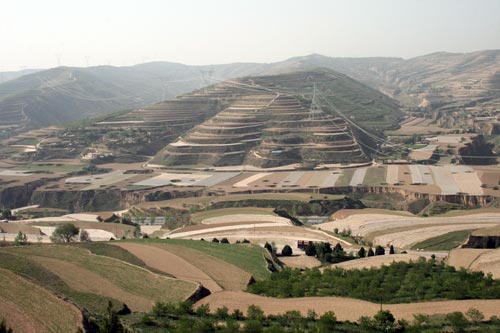
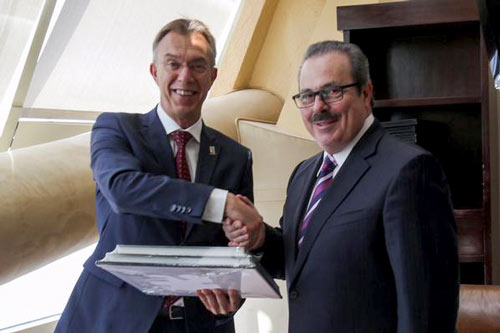 Texcoco, Mexico, 11 June 2015.- Mexico’s Secretary of Agriculture, Livestock, Rural Development, Fisheries and Food (SAGARPA) and the International Maize and Wheat Improvement Center (CIMMYT) discussed today their continued commitment to Mexico’s food security and pledged to work together to raise Mexico’s self-sufficiency of cereal production to 75 percent by 2018. Enrique Martínez y Martínez, head of SAGARPA, and Martin Kropff, newly appointed director general at CIMMYT, held a meeting to discuss research and development priorities in the framework of their strategic collaboration. As an example of the collaboration the MasAgro project aims to boost maize productivity by promoting use of improved seeds and sustainable farming practices among Mexico’s smallholder farmers and how these past efforts can be improved for more impact that responds to real needs.
Texcoco, Mexico, 11 June 2015.- Mexico’s Secretary of Agriculture, Livestock, Rural Development, Fisheries and Food (SAGARPA) and the International Maize and Wheat Improvement Center (CIMMYT) discussed today their continued commitment to Mexico’s food security and pledged to work together to raise Mexico’s self-sufficiency of cereal production to 75 percent by 2018. Enrique Martínez y Martínez, head of SAGARPA, and Martin Kropff, newly appointed director general at CIMMYT, held a meeting to discuss research and development priorities in the framework of their strategic collaboration. As an example of the collaboration the MasAgro project aims to boost maize productivity by promoting use of improved seeds and sustainable farming practices among Mexico’s smallholder farmers and how these past efforts can be improved for more impact that responds to real needs.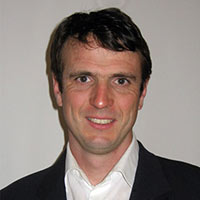 Christian Thierfelder is a CIMMYT cropping systems agronomist based in Harare, Zimbabwe. He has worked since 2004 in CA projects in Malawi, Mozambique, Zambia and Zimbabwe and has conducted applied and strategic research on-farm and on-station to adapt CA to the needs of smallholder farmers in southern Africa. Through effective partnerships he has reached out to more than 10,000 farmers in southern Africa. He guided the research programs of 25 B.Sc., M.Sc. and Ph.D. students, and has authored and co-authored more than 30 research articles in high-impact peer-reviewed journals and books.
Christian Thierfelder is a CIMMYT cropping systems agronomist based in Harare, Zimbabwe. He has worked since 2004 in CA projects in Malawi, Mozambique, Zambia and Zimbabwe and has conducted applied and strategic research on-farm and on-station to adapt CA to the needs of smallholder farmers in southern Africa. Through effective partnerships he has reached out to more than 10,000 farmers in southern Africa. He guided the research programs of 25 B.Sc., M.Sc. and Ph.D. students, and has authored and co-authored more than 30 research articles in high-impact peer-reviewed journals and books.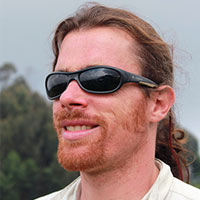
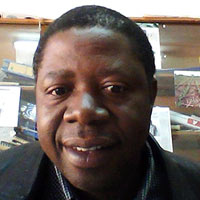 Isaiah Nyagumbo is a CIMMYT cropping systems agronomist based in Harare, Zimbabwe. He has worked in water harvesting and soil conservation research initiatives and was a pioneer of CA work on smallholder farming systems in Zimbabwe since the 1990s. Isaiah currently leads the agronomy component of the CIMMYT managed and ACIAR funded regional program ‘Sustainable Intensification of Maize-Legume Systems in Eastern and Southern Africa (SIMLESA)’ operating in 5 countries of Eastern and Southern Africa. Isaiah has also authored and contributed to regional research publications focusing mainly on CA, agricultural water management, water harvesting and technology dissemination.
Isaiah Nyagumbo is a CIMMYT cropping systems agronomist based in Harare, Zimbabwe. He has worked in water harvesting and soil conservation research initiatives and was a pioneer of CA work on smallholder farming systems in Zimbabwe since the 1990s. Isaiah currently leads the agronomy component of the CIMMYT managed and ACIAR funded regional program ‘Sustainable Intensification of Maize-Legume Systems in Eastern and Southern Africa (SIMLESA)’ operating in 5 countries of Eastern and Southern Africa. Isaiah has also authored and contributed to regional research publications focusing mainly on CA, agricultural water management, water harvesting and technology dissemination.